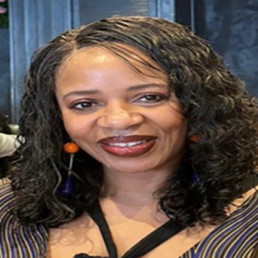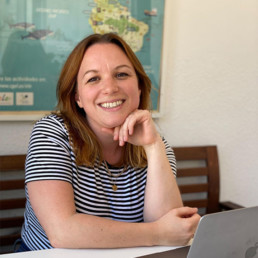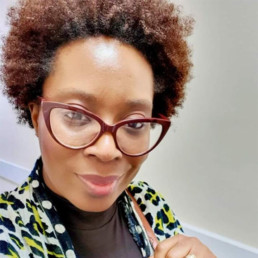Heart Stories and Community

Written by Samira Vance
Diversity, Equity and Inclusion Leader and Consultant. Founder of the Thailand DEI Hub.
As I journey into the next chapter of my life and career, I am finding myself taking stock and feeling gratitude for many things. As I intentionally work to engineer this next phase, I want to share one aspect that I have come to realise is essential to build and find. A community of ‘my people’.
To clarify, by ‘my people’ I don’t necessarily mean BIPOC folx but rather individuals and groups that endow me with a sense of true belonging. The people with whom you truly and fully unmask and allow space for them to do the same. At the start of this year, I attended two incredible conferences (AIELOC and DEIx24) and I was overwhelmed at the power of community. I have since set up the Thailand DEI Hub to provide a similar sense of community and peer support after being inspired by both conferences. Whilst I have found ‘my people’ along my professional journey, it was positively overwhelming to be around so many that could potentially be ‘my people’ all in one place. It is a great thing to find, witness and be amongst the souls that nourish one another.
One of the things that was consistent was the level of vulnerability shown by attendees. At DEIx24, Margaret Park asked us to consider what constitutes a safe place. Is a statement to that effect all that is needed for the feeling of safety to be felt by participants? Many of us have felt the disconnect between being told that it is a safe place when our body and gut tell us otherwise. Yet, in these instances with strangers, online ‘friends/connections’ and acquaintances, the level of vulnerability very clearly indicated the sense of safety felt by many.
A fellow attendee, spoke of wanting to connect people with ‘similar heart stories’. Heart stories. The phrase stuck with me. After some pondering, I have decided that heart stories are those defining, poignant stories of our lives. The ones that make us who we are and the ones that describe our journey through life. Are they what bind us? Do heart stories recognise each other? Indeed hearing my stories and those of my loved ones spoken back to me without my uttering a single word made me feel heard. Seeing the raw emotions through vulnerability that mirrored my own, moved me to connect. I recognised the heart story because it was similar to my own. The snapping of the fingers, the head nods and the ‘Mmms’ told me that the speaker and I were not alone. Those moments, conversations and experiences moved me to make space in my life for these strangers. We could speak truth to our stories where we were understood.
It was a metaphorical embrace signalling understanding, joy, sadness, a spectrum of emotions all at once but most of all, safety in being able to share those emotions with others. It said:
I see you, even as you hide
I hear you, even though you haven’t spoken
I know you, although we’ve never met
I am you, or at least that what my heart thinks
I feel your heart story
At AIELOC, another workshop leader spoke about safe spaces in relation to indigenous practices, specifically that of the Muscogee (Creek) Nation and roles of different members of the tribe. As BIPOC folx, but other minoritised groups too, spread across the globe, are we all yearning for places where we belong?
So many of us work to create equitable and inclusive spaces with the aim of fostering belonging, but what is the cost of existing in spaces not designed for us at this moment? What is the cost of continuing to mask day in, day out? I am very fortunate in that I have been able to find the people in my professional life with whom I can exist as my authentic self but the reality remains that for minoritised groups, this is consistently not the case outside of these relationships and spaces. Whilst we are working on systemic change, it is vital that we find our communities and safe spaces.
As I move back to England (my home), I do so with the recognition that I am a member of both visible and non-visible minority groups. I think about the communities, ‘tribe members’ and safe spaces that I will need in personal and professional settings to both support my mental health and allow me to sustainably carry on with the work that I do.
If you know of any amazing communities in the South East of England or ones based online for black women, mixed-race women, people of south-asian heritage, neurodivergent people/parents, parents of black children, DEI professionals and/or not-so-fit basketballers please do share and connect with me if you’d like! The word underpinning my vision board this year was ‘nourish’ and I can absolutely see the power of communities and people to provide spiritual, mental and sometimes intellectual nourishment and strength.
Diary of a Dyslexic Teacher

Written by Liz Boyer
Liz Boyer has dedicated 21 years to education, she specialises in EYFS and KS1. Liz has taught across phases in both the Independent and State sectors, most recently in inner-city schools that are wonderfully diverse in nature. Liz has held various school leadership roles and has devotedly mentored ITT/E students for 15 years. In 2021, she became a SCITT Tutor, and currently serves as Primary Lead for Bluecoat SCITT Alliance BSA. Starting in September 2024, Liz will begin her role as a Senior Lecturer at the University of Derby UoD, continuing her commitment to fostering excellence in education and developing the next generation of teachers. Liz is also dyslexic but doesn’t wish that to define her.
In 2021, I wrote a diary during a 10-day COVID isolation. Fast forward to today I am a Primary SCITT Lead at Bluecoat SCITT Alliance BSA within the Archway Learning Trust ALT. Here, I have the honour of collaborating with an array of exceptional trainee teachers, each with their own unique experiences. Some of these trainees have encountered the challenges associated with neurodiversity, and it is a privilege to support them as we navigate the dynamic landscape of teaching together. I firmly believe that every individual has valuable contributions to make, and I am committed to working with both trainees and educational institutions to ensure that everyone’s strengths are recognised and celebrated. Some schools actively champion colleagues of all backgrounds, while others are striving to achieve this inclusive environment. My primary support in this endeavour is Diverse Educators DE, an organisation that not only shapes policy but also guides schools as we navigate the era of inclusivity.
2021 Highlights
Day 1: Introduction
I am Liz Boyer, an educator with 18 years’ experience, whilst I have had many senior school roles I identify first and foremost as a teacher. What sets me apart from some others (although 20% of the population are with me) is my dyslexia, a facet of my professional life I typically do not emphasise however, I am not saying it should be hidden. Today, I aim to share insights, coping strategies, and reassurance for teachers—whether dyslexic or not—drawing from my own journey.
Day 2: Lists
Make a plan with tiny steps to kick start tasks, applicable beyond teaching. For instance, when tackling a long-term plan, start by just gathering necessary materials. Set a specific day and time for each step, adhering to it diligently. Embrace list-making to maintain momentum—I find ticking tasks off deeply rewarding.
- Write day 2 diary entry for blog.
Day 3: Mathematics
Reflecting on my own education in maths, I faced significant anxiety around numbers, which mastery, a concept absent in my schooling, would have alleviated. My breakthrough came shortly before my PGCE during a refresher course, highlighting missed fundamental concepts. Witnessing mastery in Early Years, I see its power in building confidence and comprehension, ensuring all students succeed.
Day 4: Level 7
For reluctant readers and writers aiming for academic credibility at Level 7, the demands on trainees, ECTs, and their mentors are undeniably higher than before. While high expectations for teachers are justified, they should come with increased trust and respect for the sector. Amidst such pressure, retaining and nurturing good teachers becomes crucial. Here are practical pointers for those feeling overwhelmed:
- Start with subjects that genuinely interest you, for me EYFS or ITT/E.
- Cultivate a network of trusted friends and colleagues who can help read and rephrase materials.
- Utilise social media groups for resources and support.
- Incorporate audiobooks or podcasts into your routine for multitasking.
- Engage in webinars or teaching hubs for ongoing, affordable support.
Day 5: Phonics
Balancing play, phonics, and literacy is challenging but crucial. Reflecting on my education and my son’s journey, I recognise the importance of time in learning to read and write. While the new EYFS framework is positive, there is still a lack of trust in children’s need for exploration and play. More emphasis on Phase 1 and language development in Reception is essential.
Day 6: Asking for Help
Accepting support is vital, even though I found it challenging in the past. My mum checked my work as a teenager, and although I found it embarrassing then, I now appreciate support from her or other trusted checkers.
Day 7: Making Mistakes
Mistakes are part of learning, but professionalism demands accuracy in communication. You also need to set a good example to children and I think that written and spoken English needs to be correct. Daily practice and support are essential for improvement, use flashcards and revision techniques just as you would with children. Senior Leaders need to play to people’s strengths and celebrate the creativity, ability to communicate and energy to name a few positive attributes that often come from pupils and teachers with dyslexia.
Day 8: Health and Resilience
Resilience is vital for teachers. Learning from setbacks and taking care of mental and physical health are crucial. After setbacks like nerves in interviews, it is important to learn and grow.
Day 9: Supply Teaching
Supply teaching offers valuable learning opportunities and keeps educators sharp. It allows observation of various school cultures and improves subject knowledge through diverse experiences.
Day 10: Conclusion
I hope you have found my experiences useful and that I have emphasised that having dyslexia or other learning needs need not be a barrier to teaching. Full blog available on request.
Inclusion Love Languages

Written by Caroline Anukem
Caroline Anukem is Equity, Diversity and Inclusion Lead at Beaconsfield High School in the UK. She is a driving force, a change-maker, and a relentless advocate for equity.
Forget Acts of Service: The Love Languages Revolutionising Inclusion
Tired of the same old diversity and inclusion (EDI) initiatives that fall flat? It is time to do away with the generic and delve into a framework that speaks to the heart of belonging: Inclusion Love Languages.
Imagine this: You walk into a conference feeling a pit in your stomach. The name tags are impersonal, the panels lack diverse voices, and you struggle to find someone who “gets” your background. This is the opposite of inclusion. Now, picture a different scenario. You are greeted warmly with your preferred pronoun, the agenda reflects a range of perspectives, and breakout sessions offer opportunities for collaboration across differences. This – this – is inclusion in action.
Beyond Tolerance: A Celebration of YOU
Inclusion should not be about simply tolerating differences. It is about actively celebrating them. The “Love Languages” model, popularised by Gary Chapman, categorises how individuals receive and express love. I propose adapting this framework to inclusion, recognising that everyone has preferred ways of feeling valued and respected in a space.
What are YOUR Inclusion Love Languages?
Just like some crave words of affirmation from a partner, others might feel most included through mentorship opportunities or invitations to social gatherings. Think about your own preferences. Do you thrive in environments with clear expectations and open communication (Acts of Service)? Or do you feel most valued when your unique perspective is acknowledged and celebrated (Words of Affirmation)?
Understanding your own inclusion love language is just the first step. Now consider how you can identify and address the preferences of others. Perhaps a colleague or a fellow student feels most included through casual check-ins (Quality Time), while another appreciates being included in focus groups (Gifts – offering opportunities for contribution).
From Feel-Good to Functioning: The Power of Inclusion
True inclusion is not just about creating a warm and fuzzy atmosphere. It creates a sense of psychological safety, where individuals feel comfortable taking risks, sharing ideas freely, and being their authentic selves. This, in turn, unlocks a treasure trove of benefits:
- Innovation Unleashed: Diverse perspectives combined with psychological safety create a breeding ground for ground-breaking ideas.
- Engagement on Fire: Feeling valued motivates people to bring their best selves to work, leading to increased productivity and engagement.
- Collaboration Takes Flight: A sense of belonging improves teamwork and inevitably reduces conflict, thus creating a more positive and collaborative environment.
Speaking Your Inclusion Love Language: Building a Thriving environment
By understanding the “inclusion love languages,” we can move beyond a one-size-fits-all approach. This reframing equips us with practical tools to cultivate a culture of belonging, the foundation for a truly thriving and equitable working or learning environment.
Committing to a queerer future in the university

Written by Alex Baird
they/them
Before moving to the Higher Educator sector seven years ago, I worked in various schools for over twelve years, latterly as Director of Sport. At the University of Bedfordshire I am a Senior Lecturer in Sport and Physical Education, an EDI Lead, and the Vice Chair of the LGBTQ+ Alliance staff network. I have just finished an EdD at UCL and the research I write about here constituted my EdD thesis.
In the process of moving from teaching in schools to lecturing in Higher Education (HE) and then embarking on a doctorate, I have been encouraged to read, reflect, and write more. I have gravitated towards my LGBTQ+ lived experiences and perspectives and I find myself increasingly motivated to carry out LGBTQ+ themed research. Being a LGBTQ+ researcher encompasses treading a different and uncertain path. In anticipating a few negative reactions to my research or worse still not being heard at all, I will attempt to speak calmly and clearly in order to bridge a connection and appeal to the shared interests that we might have between us.
LGBTQ+ leadership has often been excluded from UK HE, HE leadership research and wider leadership research, meaning leadership is narrowly understood (Lumby & Moorosi, 2022; Thomson, 2017). The individualistic, fixed, and binary conceptualisations of leadership, also enable and maintain prevailing power structures and inequalities (Ferry, 2017). For this reason, I was excited to hear about a proposed LGBTQ+ leadership development programme within the specific context and current climate of UK HE and further still when I was given access as a researcher to query leadership and leadership development.
The LGBT Leadership Development Programme I attended was delivered within one post-92 university and consisted of three formalised classroom days and individual mentorship. I had not anticipated, since I was not employed at the host university, being a participant as well as observer on programme days. However as soon as I arrived on day one, attendees drew me into the group and session activities. I tried to extend a reciprocal level of openness about my personal and professional experiences while balancing my role of observer, being interested without becoming too active. I learnt to wait a while and let other attendees ask a question before I did. I was invited to attend five further socials and three LGBTQ+ network events which brought me even closer to attendees’ lives. Attendees willingly engaged in interviews and I became aware of how their voices were entangled with other voices, the atmosphere of the programme’s queer space, their perceptions of the wider university, and their loyalty to the programme and its survival.
The energy, lightness, and freedom of the programme’s queer space produced new ways of thinking about, seeing, and enacting leadership. The community of LGBTQ+ attendees who came together (which included both academic and professional staff) facilitated intergenerational queer knowledge sharing amongst LGBTQ+ staff and offers an example of how distributed leadership and discussion works in practice. LGBTQ+ leadership was conceptualised as listening to, valuing, and developing people, and challenging inequalities by voicing an alternative perspective. A form of leadership which is relational, collective, creative, temporal, and offers some resistance to the negative pressures of neoliberalism. Enacting LGBTQ+ leadership was seen as being different (at times) from management rather than the two being interchangeable terms; attendees sheltered their team from or utilised market forces in UK HE to support inclusion and recognised that leadership did not necessarily require an authority role.
I know of three attendees who were promoted during or shortly after attending the programme however this overlooks the longitudinal, curvilinear, and wider outcomes for both attendees (mental wellbeing, career satisfaction, and career direction) and the organisation (development and retention of diverse talent). Instead of assimilating or conforming to normative versions of leadership, LGBTQ+ lives were attached to leadership with growing pride and joy. Crucially, though, the attendees in this queer space reflected upon and redefined the meaning given to authenticity (Fine, 2017), which was viewed by some attendees as beyond an ‘outness’ (recognising the nuances involved in this act), rather knowing oneself (an ongoing process) and embracing this. Whilst Authentic Leadership Theory (Avolio et al., 2004) fails to consider the complexities of relational and contextual factors, the attachment of this concept to the LGBTQ+ leadership development programme offered personal benefits to LGBTQ+ attendees’ wellbeing and leadership potential (Fletcher et al., 2024) and encouraged qualities in their leadership, which have been identified as being essential to UK HE (Spendlove, 2007; Bryman & Lilley, 2009).
The programme and LGBTQ+ mentorship readdressed feelings of powerlessness in the wider university, and nurtured and developed LGBTQ+ staff talent (and the university’s emerging leadership). This included mentors offering support when mentees applied for specific jobs during the programme’s duration and mentors explaining pathways for academic staff (which for some had been previously obstructed); clarifying the university’s systems and structures; and advising mentees to network with colleagues within HE. Attendees gained confidence to walk their own paths and voice alternative viewpoints. Attendees also spoke about the ‘softer’ merits of the programme, for example friendships continuing to blossom. Attendees viewed leadership development as a continual process of learning from and reflecting upon their leadership and life experience. It was also noted that progression was not always available, nor should it be the only aspiration, given the risk and limitation involved.
In sharing these findings to stimulate future versions of LGBTQ+ leadership development programmes I have been asked why a LGBTQ+ leadership development programme should be prioritised over other protected minority groups. I am not suggesting that LGBTQ+ staff have a superior need to others rather that this research indicates there is a value to leadership development programmes which have a specific focus and membership. However a LGBTQ+ leadership development programme would be particularly meaningful at this moment in time, when LGBTQ+ staff and students may be feeling less safe given the backdrop of a ‘culture war’ in the UK and a global ‘moral panic’ surrounding trans people. HE should be at the forefront of leading the way to positive societal change. I hope my research makes a valuable contribution to guiding future LGBTQ+ leadership development programmes and their accompanying research.
References
Avolio, B. J., Gardner, W. L., Walumbwa, F. O., Luthans, F. & May, D. R. (2004) ‘Unlocking the mask: A look at the process by which authentic leaders impact follower attitudes and behaviors.’ The Leadership Quarterly, 15, 801-823.
Bryman, A. & Lilley, S. (2009) ‘Leadership Researchers on Leadership in Higher Education.’ Leadership, 5(3), 331-346.
Ferry, N. C. (2018) ‘It’s a family business!: Leadership tests as technologies of heteronormativity.’ Leadership, 14(6), 603-621.
Fine, L. E. (2017) ‘Gender and Sexual Minorities’ Practice and Embodiment of Authentic Leadership: Challenges and Opportunities.’ Advances in Developing Human Resources, 19(4), 378–392.
Fletcher, L., Pichler, S. & Chandrasekaran, L. (2024) ‘Songs of the self: the importance of authentic leadership and core self-evaluations for LGBT managers.’ Journal of Managerial Psychology, 39(2), 131-145.
Lumby, J. & Moorosi, P. (2022) ‘Leadership for equality in education: 50 years marching forward or marching on the spot?’ Educational Management Administration & Leadership, 50(2), 233-251.
Spendlove, M. (2007) ‘Competencies for Effective Leadership in Higher Education.’ International Journal of Educational Management, 21(5), 407–417.
Thomson, P. (2017) ‘A little more madness in our methods? A snapshot of how the educational leadership, management and administration field conducts research.’ Journal of Educational Administration and History, 49(3), 215-230.
Inclusion Beyond Tolerance.

Written by Claire Stancliffe
Claire Stancliffe is an education consultant specialising in gender equity, diversity & inclusion and positive masculinities. She’s on a mission to break down gender stereotypes in schools.
Pride month is well underway, and it’s got me thinking about the thorny issue of tolerance. It’s a word we hear often associated with diversity in general, but very commonly with the LGBTQIA+ community. Tolerance is the idea that we do not need to understand someone to be able to get along with them. That we can all rub along together, to live and let live. Sounds harmless enough right? Yet if I told you I would tolerate your company for the evening, I don’t think you would be thrilled.
When it comes to inclusion, the notion of tolerance falls short. It says, “I don’t mind you breaking the rules”, while all the time upholding and even strengthening social norms. Due to religious differences, the ways we have been socialised and the norms of our various cultures, it will never be possible to create a world where we all see eye to eye on everything, but if we want to encourage true inclusion I think we need to look beyond tolerance, to a more expansive view of what exactly ‘normal’ is.
Breaking gender stereotypes
Up until very recently, our frame of reference for ‘normal’ when it comes to how we raise our children has been cis-heteronormative – that is that everyone’s gender is that which is assigned at birth (or ‘cisgender’), the expectation that all people are or will be heterosexual (or ‘straight’), and that girls behave according to one set of rules, and boys behave according to another. This has led to harmful stereotypes that perpetuate inequality.
It struck me recently that when we encourage young people to see past the narrow confines of gender stereotypes, we are often doing so from a tolerance perspective. By pointing out that it’s possible to break the norm, we can inadvertently reinforce it. It’s ok for girls to be good at maths, but it’s not part of the norm. It’s ok to marry someone of the same gender, for example, but it’s not part of the norm. It’s ok for a boy to wear makeup, but it’s not part of the norm. The terms ‘male nurse’ and ‘lady doctor’ that are still so commonly used come to mind here.
For children, and indeed all people, breaking away from the group and doing something that’s perceived as different can be a stressful position. Many of us avoid taking the risk, preferring to go along with the crowd and feel acceptance, which can severely limit our options for happiness.
Redefining the norm
Breaking gender stereotypes is not just about allowing exceptions; it’s about redefining what the norm can be. This requires creating environments where diversity in gender expression and identity is not just tolerated but celebrated.
Here are three strategies that I think can shift the dial in a positive direction.
- Provide diverse role models whenever possible. Consider where you have the opportunity to showcase different stories – can a maths word problem include a scenario with two mums; a girl playing with toy cars; a boy buying nail varnish? Invite a diverse range of professionals to come and speak to your class that counter common stereotypes, and remember to include men who enter caring professions, for example, as well as women in STEM. The more possibilities children are exposed to, the broader their horizons grow in terms of futures they imagine for themselves.
- Watch your language. Use gender-neutral terms where possible, and certainly for all job roles. Instead of ‘fireman’ use ‘firefighter’, for example, and instead of ‘lollipop lady’, try ‘crossing guard’. When referring to the group, avoid using gender identifiers unless it’s relevant. Instead of ‘boys and girls’, use terms like ‘team’, ‘class’, ‘everyone’. Small changes can make a big difference in how children interpret the world around them and the choices open to them.
- Actively challenge stereotypes. Don’t shy away from discussing stereotypes when they come up, but approach it with curiosity. Try asking ‘what makes you say that?’ and engaging as the young person explains their point of view. Highlight examples from their real lives that go against stereotypes, and encourage them to think about stereotypes that they themselves might defy. This can help them start to question the validity of broad, catch-all statements.
As adults, we can influence the way young people see the world and their place within it. So let’s move past a tolerance mindset, to one that truly celebrates them for who they are, that helps them connect to others they identify with, and that cheers them on as they grow into who they are really meant to be.
Understanding Staff Wellbeing in Academies: A Mid-Year Review

Written by Iona Jackson
Iona leads on turning Edurio’s national datasets into useful and impactful insights for trust and school leaders. Iona has worked on national reports focused on topics such as equality, diversity and inclusion, staff retention and pupil experience and wellbeing. She works closely with education leaders and industry experts to understand what the current position means for the sector, and where to go from here.
In the education sector, the wellbeing of staff is a critical issue that impacts not only the individuals involved but also the quality of education provided to pupils. Recent data from the Edurio 2023/2024 mid-year report of Staff Wellbeing in English Academies sheds light on the diverse experiences of educators and other school staff, highlighting significant variations in wellbeing across different roles and protected characteristics.
Overall Wellbeing Insights
The report reveals that less than 40% of staff feel very or quite well, with over a quarter reporting poor wellbeing. Additionally, while around a third of staff report sleeping well, almost half feel stressed and overworked. Despite these challenges, the majority of staff often feel excited about their work, showcasing a dedication to their roles despite the pressures they face.
Role-Based Wellbeing Differences
Wellbeing varies significantly by role within the school environment. Teachers, for example, report the lowest levels of wellbeing across almost all measures, including sleep quality and stress levels. Leadership roles, while also experiencing high levels of stress and workload, report better overall wellbeing compared to other roles.
Protected Characteristics and Wellbeing
Examining wellbeing through the lens of protected characteristics reveals notable disparities. Age, gender, sexual orientation, ethnicity, disability, and parenthood all influence wellbeing in distinct ways.
Age: Younger staff, particularly those aged 25-34, report the lowest levels of wellbeing, highest stress, and poorest sleep quality. In contrast, older staff, particularly those aged 65-74, report better overall wellbeing and less stress.
Gender: Male respondents generally report higher wellbeing compared to female respondents. However, those identifying with another gender identity, although a small group, report significantly worse wellbeing across all measures.
Sexual Orientation: Heterosexual staff report slightly more positive wellbeing outcomes than their LGB+ counterparts. Stress levels are notably higher among LGB+ staff, reflecting the unique challenges they face in balancing personal and professional identities in often unsupportive environments. As contributors Jo Brassington and Adam Brett from Pride and Progress noted, “The stress that LGBT+ teachers experience speaks to the need for LGBT+ teachers, and teachers from minority backgrounds, to receive mandatory training and support as part of ITE programmes and throughout their careers.”
Ethnicity: The relationship between ethnicity and wellbeing is complex, with no clear trend emerging. However, it is noteworthy that White British staff are the least likely to feel excited by their work. The commentary from Black Men Teach highlights, “While there are variations across ethnic groups, the disparities are not always stark and consistent. This aligns with broader discussions on intersectionality, recognising that individuals may experience unique challenges based on the intersection of various identities, such as race, gender, and socio-economic status.”
Disability: Disabled staff report significantly lower wellbeing across all measures, with issues like poor sleep quality and high stress levels being particularly pronounced. Catrina Lowri from Neuroteachers emphasises that creating a sense of belonging and celebrating disability can have a substantial positive impact on staff wellbeing. “Where schools are trying to improve situations for disabled staff the most successful organisations are those which create a sense of belonging, not only for disabled staff but for those with protected characteristics as a whole.”
Parenthood: Staff who are parents generally report higher overall wellbeing, lower stress, and a greater sense of excitement about their work compared to non-parents. However, they do report slightly lower sleep quality. The reflections from Maternity Teacher Paternity Teacher underscore the importance of understanding the unique experiences of parent-teachers to better support their wellbeing, “More information is needed to understand the experiences of parent-teachers. The age of their children, for example, is likely to play a part in their sense of wellbeing, particularly the impact of their sleep on their stress levels, resilience and ability to cope with their workloads.”
Recommendations for Improving Wellbeing
The report concludes with several recommendations aimed at enhancing staff wellbeing, including taking more intersectional approaches to understand wellbeing disparities more comprehensively, providing cultural competency training, establishing mentorship and support networks for staff from minority backgrounds, advocating for more equitable policies and wellness programs tailored to the unique needs of diverse staff, and fostering partnerships with community organisations to strengthen support for staff.
Hannah Wilson, Director of Diverse Educators, contributes to the conclusion of the report, inviting readers to reflect on their practices:
- Do we know how many trans and non-binary staff that we have in our organisation? How is their MHWB and what can we do to support this group who are very vulnerable in the current climate?
- Do we know how many LGBT+ staff that we have in our organisation? Is there a difference in the MHWB of a gay man to a lesbian woman, and how does this differ if they are also a person of colour or a person of faith?
- Do we know how many disabled staff/ staff with a disability that we have in our organisation? How are different staff disabilities and access/ inclusion needs supported in an intentional and a proactive way?
By recognising and addressing the diverse needs of staff, schools can create a more inclusive and supportive environment that promotes the wellbeing of all educators, ultimately benefiting the entire educational community.
For more information:
The 2024 Staff Wellbeing in Academies report reveals important contrasts in the wellbeing of different groups of staff working in England’s schools and features expert commentary from Black Men Teach, Diverse Educators, Maternity Teacher Paternity Teacher, Neuroteachers, Pride and Progress and Sufian Sadiq.
Edurio is England’s leading provider of staff, pupil, and parent feedback surveys for schools and multi-academy trusts. So far, our school surveys have supported over 750,000 pupils, parents and school staff. Edurio’s platform and nationwide dataset allow trust and school leaders to benchmark their performance against national averages on topics like staff wellbeing, retention and EDI, parental engagement, pupil wellbeing and others. By measuring the often difficult-to-track elements of education quality, Edurio can help school leaders make informed decisions, develop engaging relationships with staff and communicate their values to their community.
What Could Sustainable Teacher Recruitment Campaigns Look Like?

Written by Emma Sheppard
Emma founded The MTPT Project, the UK's charity for parent teachers, in 2016 when on maternity leave with her first child. She has 12 years experience as an English teacher, Lead Practitioner and ITT Lead, and now runs The MTPT Project full time.
When I trained to teach in 2010, I was drawn into the profession by the motivation to Make a Difference. I wanted to be a Changemaker; to have Social Impact; to Do Good. And I was willing to work all hours and make sacrifices to – essentially – satisfy my guilty white saviour complex.
Maybe that’s a little cutting: after all, a sense of moral purpose and the pursuit of meaningful work are values to live and stand by.
But, two years later, after missing holidays with my family, developing chronic migraines and unable to identify any other hobbies beyond the bassoon that I had once enjoyed (but no longer had time to play), I burnt out and quit UK education for a stint in an international school, and the luxury of an expat lifestyle.
Vivid memories of two recruitment videos remain with me from this time. In the first, a young man rides to school in the dark, and is the first in the building to switch on the lights. He excels at his job, cares for his students. At no point do we see him doing anything other than living and breathing teaching.
In the second, a young man wakes up, arrives at school, and we jump between his previous office job (dull) and his current teaching role (fulfilling). At dinner time, he talks about how great teaching is and then gets into bed, and the cycle repeats itself. At no point is there anything in his life other than teaching (and the back of his girlfriend’s head).
There is nothing incorrect about either advert: teaching is a brilliant and life-affirming career. And – let’s admit it – as teachers, we do love to regale our friends and family members with hilarious school anecdotes at every opportunity. The kids are the best bit. Indeed, both adverts are powerful appeals to potential recruits who want to do nothing but teach.
But for how long do we want to – or are we capable of – martyring our whole lives to our profession?
Surely, if we want to see improved teacher retention, we need recruitment campaigns that sell teaching as a career choice that allows for a life beyond the classroom?
This is where a recent video from Reach Teacher Training has got things so right. Like the videos previously mentioned, this advert follows two teachers from the start to the end of their working day, but the marketing team behind this piece have made some deliberate directorial decisions about the culture that new recruits can expect at Reach.
In the first iteration of the video – a 29 second clip – Reach dedicate 6 seconds to images of one of the teachers hugging her own child and waving goodbye at the door before she drives away. That is 21% of expensive marketing time given over to stating that teaching is a family-friendly career choice – at least at a Reach Academy.
In the second version of the video, Reach set aside a glorious 23 seconds (of 55 seconds in total, so 42% of the entire clip) to the life-friendly nature of their school. The first teacher joins her running club to run home with her pals in the sunshine. Meanwhile, we zoom in to the second teacher closing her laptop and checking her watch as she finishes her day. Her watch says 15:54 and, presumably, she’s on her way to school pick-up.
In both videos, we see the teachers enjoying animated conversations with their students. We see them delivering excellent lessons. We see them Making a Difference.
Indeed, the text that accompanies the social media posts sharing these videos reads: Join our community; Change lives; Train to teach.
But unlike those adverts that drew me into a military lifestyle of teaching that – as a 22-year-old with no real prior experience of the workplace – I could not sustain, these adverts state very clearly that the dream is possible. Teaching is a life-friendly career, state Reach, and one that you can enjoy for years to come around all the other beautiful moments that life will offer you.
Bravo, Reach Teacher Training, and the team behind your recent recruitment video.
Pride Month 2024 - Responding to homophobic language: guidance for schools using Oracy and No Outsiders

Written by Andrew Moffat
Andrew Moffat has been teaching for 25 years and is currently PD Lead at Excelsior MAT. He is the author of “No Outsiders in our school: Teaching the Equality Act in Primary Schools” and “No Outsiders: everyone different, everyone welcome”. In 2017 Andrew was awarded a MBE for services to equality and diversity in education and in 2019 he was listed as a top ten finalist in the Varkey Foundation Global Teacher Prize.
Ensuring equality for all cannot be achieved if any group of people feel they are unseen, unwelcome or feel targeted because of the person they are. As teachers, we strive to ensure that everyone feels seen, everyone feels welcome, and no one feels they have to hide their true selves, or parts of their identity.
In preparing children for life in modern Britain, we need to be clear and consistent in our efforts to make schools a safe place where children understand there are different ideas in society and prejudice may exist in the outside world, but prejudice and discrimination do not exist here, because in our school, there are “No Outsiders” and everyone is welcome.
Children are allowed to hold different views. I am a big champion of oracy as it encourages children to see both sides of a debate and understand it is possible to hold two views at one time. However, while different views are embraced, the othering of a group of people is not allowed. A child can disagree with a point of view and still show respect; this is the golden thread of a no outsiders ethos.
If a child chooses to use homophobic language, this must be tackled immediately. Children must understand there is no tolerance of prejudice at our school. It is the job of any adult to respond to homophobic language, as this is a safeguarding issue (KCSIE, 2023, “Children who are LGBT” page 51),
A quick response is; “Excuse me?” or, “What do you mean by that?” followed by, “And what do we say at our school?” to which the expected reply is “There are no outsiders”. Reiterate, “That’s right, there are no outsiders here, so you need to think about the language you are using. How are you going to put that right?”
All homophobic incidents should be recorded, and parents informed.
If homophobia arises in a debate where no individual is being targeted but there are attitudes forthcoming that need to be addressed, make sure they don’t go unchecked. An oracy framework enables us to challenge such attitudes effectively by asking the class to respond; “Would anyone like to respond to that?”. If the comment is offensive, for example if a child says, “gay people are wrong” it’s important that the adult responds immediately along the lines of;
“Can we think about the language we are using here… those ideas may exist in the outside world, but we need to be really careful about the words we use here. To say something is ‘wrong’ is different to saying, you ‘don’t agree’ with it. Do you want to re-phrase so that you are not othering anyone or being offensive?”
“What does the law say about this?” (The Equality Act, British law says it’s ok to be LGBT)
“What do we say at our school about different people?” (We say there are no outsiders, and everyone is welcome here.)
It’s vitally important the teacher addresses the attitudes while not giving their own opinion so we don’t get in to an argument or lead the children down any particular path. What we need to do instead is remind children it is ok to hold different views (“and that’s what makes this debate so interesting”) and we can still show respect and non-judgement. It’s ok to disagree with one another, the important thing is that everyone still feels they have a place here, including the child who is being offensive. It is the child’s views that are not welcome; the child is still welcome.
If a child brings their faith into the discussion; “My religion says it’s wrong”, respond in this way:
“You’re right, there are different views about this in different religions. And that’s the best thing about living in the UK- we have different views and beliefs, freedom of speech and democracy, and we have the Equality Act which protects religion and belief, so people are allowed to hold those views under British law. Who else is protected under the Equality Act? (disability, age, race, pregnancy and maternity, marriage and civil partnership, sex, LGBT) hmmm that’s interesting isn’t it – on the one hand you have religion and belief and on the other you have LGBT … both protected, both allowed… so I suppose we have to find a way to respect both views. We can co -exist without saying the other is wrong….”
And then open out the conversation, move it along using the oracy technique; “Who wants to build on that?”
Keep coming back to “That’s why we say there are no outsiders… we can have different opinions, and we can still respect each other. No one is pushed out because of their religion, their race, or because of their sexual orientation.”
I recognise that these conversations are not easy but they are important and we need to be having them with our children. My advice is to practice responses with each other as a staff team.
Here are some useful assembly links from www.no-outsiders.com:
https://no-outsiders-assembly.blogspot.com/2024/05/pride-2024.html
Assembly pictures : Football shirt (no-outsiders-assembly.blogspot.com)
Assembly pictures : football (no-outsiders-assembly.blogspot.com)
Assembly pictures : Bathroom (no-outsiders-assembly.blogspot.com)
Assembly pictures : Beano (no-outsiders-assembly.blogspot.com)
Assembly pictures : LGBT history month (no-outsiders-assembly.blogspot.com)
Assembly pictures : What is homophobia? (no-outsiders-assembly.blogspot.com)
Assembly pictures : Curly hair (no-outsiders-assembly.blogspot.com)
https://no-outsiders-assembly.blogspot.com/2024/06/veteran.html
South Asian Heritage Month: free to be me.

Written by Zahara Chowdhury
Zahara is founder and editor of the blog and podcast, School Should Be, a platform that explores a range of topics helping students, teachers and parents on how to ‘adult well’, together. She is a DEI lead across 2 secondary schools and advises schools on how to create positive and progressive cultures for staff and students. Zahara is a previous Head of English, Associate Senior Leader and Education and Wellbeing Consultant.
This year’s theme for SAHM is beautiful: free to be me. As we celebrate lived experiences, storytelling and authenticity, it seems only right that freedom and embracing our individual narratives is next.
This year’s theme has made me think where have I felt my most free? It’s not an easy question to answer. You see, growing up South Asian, (in my case, a British Pakistani Muslim, who’s family was born and raised in Africa), masking your identity can often feel normal, particularly when masking makes you feel safe in public, school and at work. Returning home, comes with its own comforts and conflict: finding joy in your culture and sticking out because you don’t really ‘fit’ within it either. Freedom then becomes a rather grey area and one that does not feel easily attainable.
Over the years, particularly I adulthood, there are a few spaces where I have come close to ‘free’: one was in my classroom. When teaching, my classroom was predominantly full of students who looked like me, shared similar lived experiences and most importantly we connected over an understanding of shared ambitions, aspirations and values. I felt free in an office with a colleague who shared my heritage; breaktimes and lunchtimes were full of laughter, candid conversations and asking each other, ‘what did your mum use to store atta in the kitchen?’, ‘were your sofas covered in shrink wrap too?’
Since then, I have felt most free in conversation with South Asian educators across the sector, most recently in conversation learning all about the wonders of Pehalwaan Juice (if you know you know…I definitely didn’t!). In many ways I share this with caution: for someone who works to amplify diversity, is there a problem if my freedom is sought and felt within my own community? Do I then just enjoy being a part of my own echo chamber?
The answer is no. Within these spaces diversity thrives. Diversity of thought, feelings, faith, work, experiences – being South Asian does not make us all one and the same and every South Asian friend, colleague and student I have connected with has a different story and identity. If anything, the freedom I feel in these spaces makes me more determined to centralise my identity in mainstream spaces too.
My childhood and teen years were branded with the term ‘coconut’ – in many ways, I didn’t think much of it then and I don’t think much of it now. What I do think about now though is how the identity of a ‘coconut’ lacked freedom. Consciously and subconsciously (and I really hope fellow South Asians can relate) I spent my childhood and adolescence straddling between several identities, depending on the audience – and I happened to be pretty good at it; I still am (we are pros when it comes to masking). I (still) do not know enough about my heritage, and I still don’t feel very ‘white’ either. Perhaps this is what imposter really means.
I studied all of this at university, wrote about it for my dissertation. 15 years later, specialising in a field that very much reflects the truth of my life couldn’t be more imperfectly perfect, no matter how much I question it on a daily basis (awareness and celebratory months are only one piece of the ‘work’). If anything, my experiences as a teacher and now EDI trainer, speaker and consultant are in some ways liberating and in other ways, revealing of just how far ‘we’ (marginalised and minorities in the West) have to go to be free.
South Asian Heritage is rich, diverse, nuanced and just huge – I am so naive and ignorant of its beauty. There is so much to learn. I’m not sure I’m free to be me just yet…but I think (and hope) we’ll get there soon.
In light of this and all of the learning and connections we have to make, I’m excited to share a space, network and group for South Asian Educators to connect, talk and be. Assistant Headteacher and Author, Yamina Bibi has said, the network will be a space ‘for anyone who is looking for a safe space for those of South Asian heritage. The challenges and issues facing South Asian Educators is somewhat different to those from other heritage groups as they are often thought of as the hard workers, obedient, quiet, shy, oppressed by colleagues and society in general. This network will support more educators to have their unique voices heard.’ We want this network to be collaborative, safe, empowering and a community where we can learn from one another too. Please Join us here!
Supporting the Emotional Needs of Young People in Schools

Written by Bianca Chappell
Bianca Chappell is a Mental Health Strategic Lead, Cognitive Behavioural Coach and Mental Health First Aider.
As an educationalist with over 15 years of experience in secondary education, spanning roles such as Head of Year and Head of Alternative Education in both the UK and New York, and as a certified master NLP and Cognitive Behavioural Coach, I am passionate about providing opportunities for young people to thrive and excel in education by meeting their pastoral and emotional needs.
The Importance of Emotional Support in Schools
The ongoing challenges with mental health, exacerbated by lockdowns and social isolation, have brought to light the critical importance of providing a platform to support the emotional needs of young people in schools. The pandemic has exposed and intensified mental health issues, with 1 in 6 children now experiencing a mental health problem, up from 1 in 9 in 2017. Furthermore, approximately 1 in 10 students have yet to return to school due to poor mental health and social anxiety since lockdown.
Emotional support is a crucial part of the wider pastoral offer in education. It goes beyond academics, encompassing the well-being of students, which in turn supports their overall development. By fostering positive well-being and emotional support, schools can significantly improve students’ mental health, self-worth, and confidence.
The Impact of Emotional Support on Academic and Personal Development
Providing robust emotional support for young people has a profound impact not only on their mental health but also on their academic performance and behavior. When students feel supported emotionally, they are more likely to attend school regularly, engage in their studies, and achieve higher academic outcomes. In fact, research indicates that students who receive adequate emotional support are more likely to pass their GCSEs and embark on a higher education journey, ultimately leading to a robust career path.
Supporting emotional well-being also contributes to better behavior in school. Students who feel understood and supported are less likely to act out and more likely to exhibit positive behavior. This creates a conducive learning environment where all students can thrive.
A Holistic Approach to Education
My dedication to supporting young people in education has led me to write, implement, and project manage the delivery of a holistic curriculum that addresses the emotional needs of students. This comprehensive approach ensures that students receive the support they need to navigate adolescence with calm, clarity, and confidence. I believe that supporting the emotional well-being of students is as important as safeguarding, and it is our duty of care as educationalists to provide robust platforms of support.
Creating an emotionally healthy school environment is not just a responsibility but a commitment to the future of our young people. By expanding our pastoral offer and integrating emotional support into the fabric of our educational systems, we can help students flourish both academically and personally.
Can you make a difference?
As educators, parents, and community members, it is imperative that we respond to the urgent need to ensure our schools are equipped to support the emotional health of our students. Let’s commit to creating emotionally healthy schools where every young person has the opportunity to thrive.
Join me in making this vision a reality. Together, we can expand our pastoral offer, support the emotional needs of our students, and build a brighter future for the next generation.
For more insights and strategies on supporting emotional well-being in schools, feel free to reach out or follow my work. Let’s make a difference in the lives of our young people.

